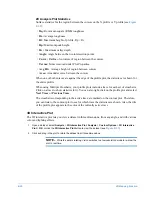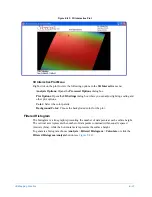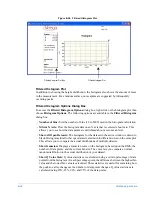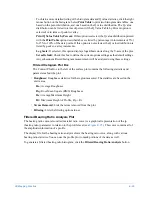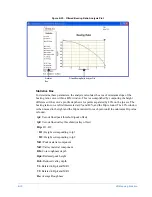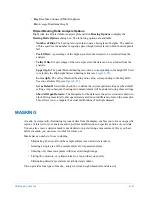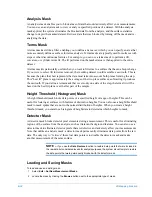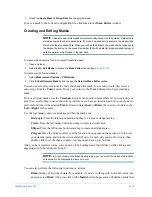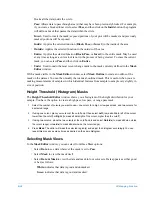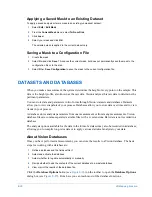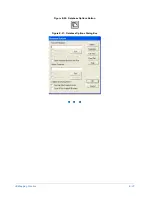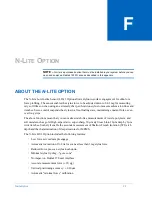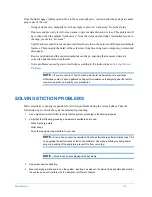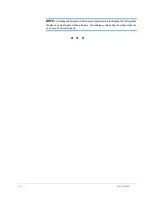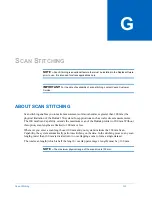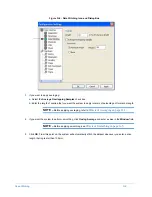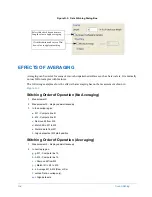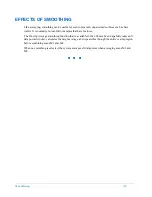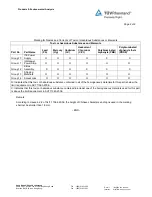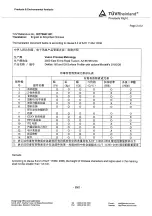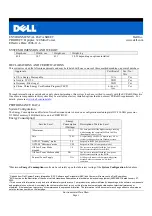
F-2
N-Lite Option
NOTE –
Some calibration is required after installation of the
N
-Lite option.
MAIN FUNCTIONS
The Servoed Engaged, Fine Positioning, and Stylus Retouch functions allow the
N
-Lite Option to
produce very low, accurate forces for any sensor position:
Servoed Engage
The servoed engage function prevents the stylus from traveling across the sample surface during
tower engagement. This significantly reduces the traverse distance and forces exerted on the surface.
It is especially useful in preventing damage to soft samples with extremely sharp styli. By default,
N
-Lite is designed to limit post-contact stylus travel to no more than 5µm vertically during the
servoed engage.
Fine Positioning
Fine positioning precisely locates the sensor relative to the sample surface. During this operation, the
servo is disabled, and the force is set to the minimum value necessary to remain on surface. There is a
small amount of stylus traverse during this phase of the engage.
Stylus Retouch
The retouch accurately establishes the true minimum force necessary for the stylus to engage the
sample surface. During this phase, there is no profiler tower motion. The stylus lifts from the sample
surface and then lowers to retouch the sample surface with the minimum possible force. This
minimum, zero force dynamically shifts the force calibration curve as the final scanning force is
applied, thus providing automatic force calibration. Because the retouch compensates for thermal and
electrical drift in the sensor force mechanism, extremely precise forces (within ±20 µg) are possible.
SOLVING
N
-LITE MEASUREMENT PROBLEMS
Due to the very low forces achievable with
N
-Lite, it is possible for the sensor to have limited
downward travel from the final engage (null) position. This is because the sensor mechanism is a
balanced pivot arm, with the balance point set so that the zero-force-coil position of the stylus rests at
its upper stop. The force coil is energized to bring the stylus down into visibility and apply scan
forces. Even though the jewel bearings used for the sensor pivot are effectively friction free, it still
takes a small fraction of a milligram of force to swing the pivot-arm across the measurable range.
When engaging
N
-Lite, it is possible for the sample surface to “disappear” below the reach of the
stylus during scanning. As discussed above, at very low forces the stylus has limited downward travel
Содержание Dektak 150
Страница 1: ......
Страница 2: ...P N 980 294 Standard P N 980 298 Cleanroom Revision A DEKTAK 150 SURFACE PROFILER USER S MANUAL ...
Страница 7: ......
Страница 17: ......
Страница 81: ......
Страница 105: ......
Страница 149: ......
Страница 191: ......
Страница 251: ......
Страница 257: ...A 6 Facilities Specifications Figure A 6 Dektak 150 without Enclosure Side View ...
Страница 258: ...Facilities Specifications A 7 Figure A 7 Dektak 150 Dimensions without Enclosure Top View ...
Страница 259: ...A 8 Facilities Specifications Figure A 8 Dektak 150 without Enclosure Center of Mass ...
Страница 273: ......
Страница 283: ......
Страница 320: ...3D Mapping Function E 37 Figure E 26 Database Options Button Figure E 27 Database Options Dialog Box ...
Страница 321: ......
Страница 331: ......
Страница 333: ......
Страница 336: ......
Страница 337: ......
Страница 349: ......

